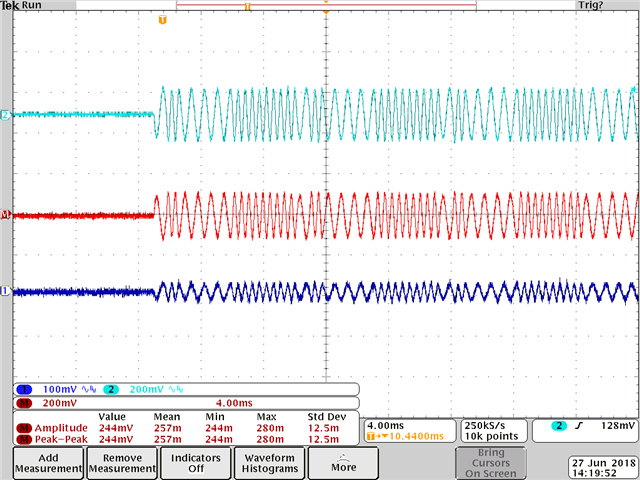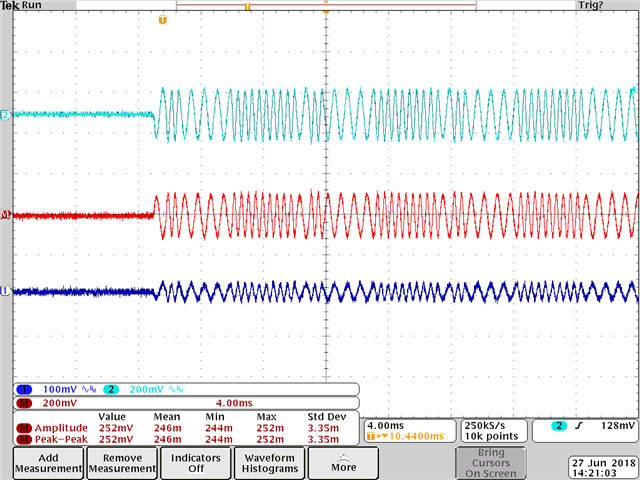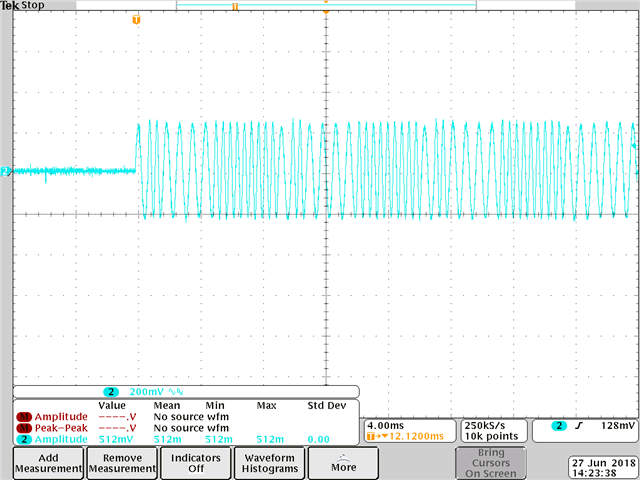Other Parts Discussed in Thread: DAC161S997, , DAC8742H
Hello, hotline!
Sorry for my slow reply to previous post. The customer was busy and now they have some results listed below.
They've done modifications according to Garrett's recommendations.
They've set a HART connection between Metran modem and PC.
On their own board they use DAC161S997 and DAC8740.
There are some questions regarding DAC161S997 and DAC8740.
The schematic of connecting DAC8740 and DAC161S997 is the same that Garrett offered (in the previous posts). The current loop load resistance is 250 Ohm, current loop supply voltage is 24 V.
The main MCU is STM32L431KC. The internal bus supply (of customer's board) is 3,5 V (got from TPS7A1601). The whole scheme power consumption is less than 2,8 mA.
The question is the following: during different currents generation by DAC, during HART transferring there is different Hart signal voltage level on load resistance. If current is 12 mA the Hart signal level is 300 mV. If current is 4 mA than Hart signal voltage is 200 mV. When voltage level is 200 mV the Metran modem starts to receive error packets. On DAC8740 output pin (pin 14 , MOD_OUT) the signal level is 500 mV if current is 4 mA.
Why the HART signal level changes when the current changes?
If they reduce board current consumption down to 1,6 mA (lower STM's frequency) the situation becomes stable, the HART transfer is stable and the HART signal levels stay stable during different currents generated by DAC.
But they can't work on such low STM's frequency (no much time to do all operations)
How could they solve this problem on higher working frequencies?
Best regards, Anastasia





